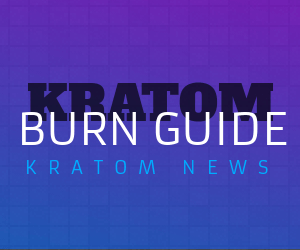The Latest: Pelosi, Mnuchin have ‘extensive’ talks on COVID relief – pressherald.com
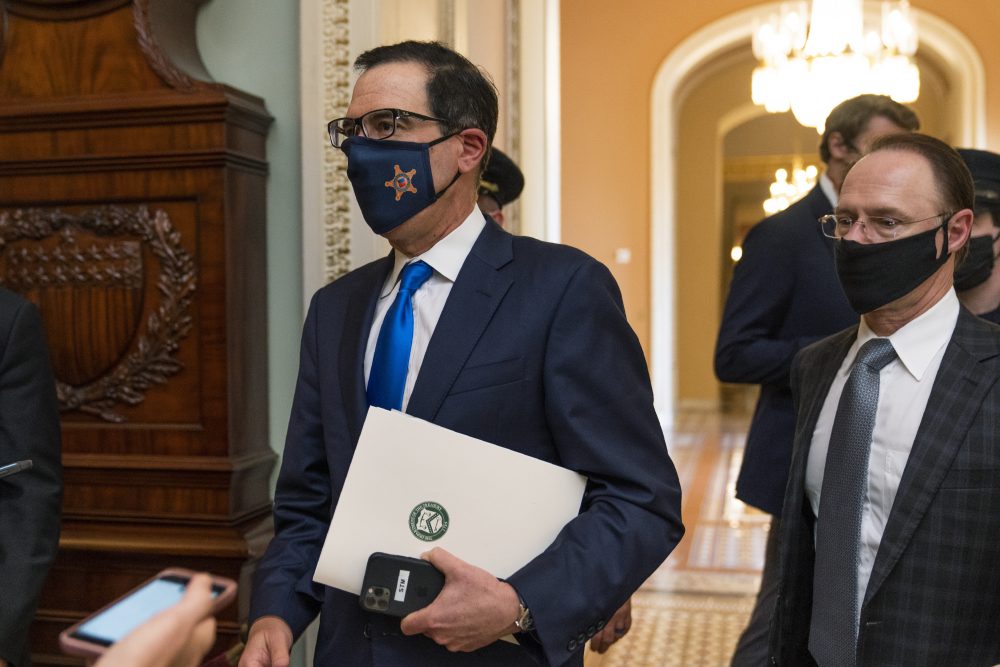
WASHINGTON — House Speaker Nancy Pelosi and Treasury Secretary Steven Mnuchin held an “extensive conversation” Wednesday on a huge COVID-19 rescue package, meeting face to face for the first time in more than a month in a last-ditch effort to seal a tentative accord on an additional round of coronavirus relief.
After a 90-minute meeting in the Capitol, Pelosi issued a statement saying the two would continue to talk. “We found areas where we are seeking further clarification,” she said.

Treasury Secretary Steven Mnuchin makes a brief comment to reporters Wednesday as he leaves the Capitol after talks with House Speaker Nancy Pelosi. Manuel Balce Ceneta/Associated Press
“We made a lot of progress over the last few days. We still don’t have an agreement,” Mnuchin said after meeting with Pelosi and briefing top Senate Republican Mitch McConnell.
At the very least, the positive tone set by Pelosi and Mnuchin represented an improvement over earlier statements. But there is still a considerable gulf between the two sides, McConnell said.
“I’ve seen substantial movement, yes, and certainly the rhetoric has changed,” White House Chief of Staff Mark Meadows said.
After initially saying the Democratic-controlled chamber would vote Wednesday night on a $2.2 trillion relief bill – a debate that would have been partisan and possibly unproductive – Pelosi made an about-face and postponed the vote until Thursday in hopes of giving the talks with Mnuchin greater breathing room.
Read the full story here.
Governor extends virus rules as Georgia deaths pass 7,000
ATLANTA — Georgia’s governor extended his emergency rules regarding COVID-19 again Wednesday as the state surpassed 7,000 deaths from the respiratory illness.
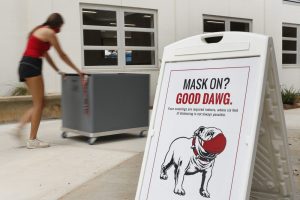
University of Georgia undergraduate students move into their dorms in mid-August. Joshua L. Jones/Athens Banner-Herald via Associated Press
Gov. Brian Kemp extended the underlying state of emergency that allows him to issue other orders, which had been set to expire Oct. 10, until Nov. 9. The Republican pushed back the expiration of a series of rules and guidelines related to the pandemic from Oct. 1 until Oct. 15.
Georgia has recorded more than 318,000 confirmed cases of coronavirus overall. The state’s seven-day average of new cases has fallen below 1,200 a day, a level equal to where it was in late June but still above the lowest point in late May. Georgia has ranked 24th in the country for new cases per capita in the past two weeks, down from a point during the summer when it was worst nationwide for that measure.
One complicating factor is the increasing usage of rapid antigen tests, which aren’t yet recorded in state figures. Department of Public Health spokesperson Nancy Nydam said the state has recorded more than 28,000 positives from those tests, but they are not yet routinely published.
The share of positives on nasal swab PCR tests has fallen to a rolling seven-day average of 6.4%, getting close to the 5% level that experts say indicates a state is doing enough testing to catch outbreaks. The number of people hospitalized also continues to creep down, now at the same level as in late June.
Fewer new deaths are being recorded, even as the state’s total rose to 7,021 Wednesday. But with three months left in the year, if Georgia averages 33 deaths a day, it will surpass 10,000 deaths for the year. The state has averaged 35 deaths a day over the past week.
Kemp changed his orders to allow restaurant and bar workers diagnosed with COVID-19 to return to work once they’ve been symptom free, without medication, for 24 hours, down from a previous three days. Spokesman Cody Hall said that was in accord with new guidance from the Centers for Disease Control and Prevention.
Kemp on Tuesday told reporters that he would keep the limit on public gatherings without social distancing at 50 people, despite some suggestions that he lower the limit to 20. He told The Atlanta Journal-Constitution that he and Public Health Commissioner Kathleen Toomey don’t want to make rules people aren’t going to follow
“It’s a great idea, but people are over that. One of the things that Dr. Toomey and I have tried to do is to make sure that we’re putting things out there that people can buy into,” he said. “And to go backwards on that, I just don’t think people are going to comply with it.”
Boston mayor delays further reopening, citing house parties
BOSTON — Mayor Marty Walsh on Wednesday delayed the next step of Boston’s reopening, citing an increase in COVID-19 cases that he partly blamed on a growing number of house parties.
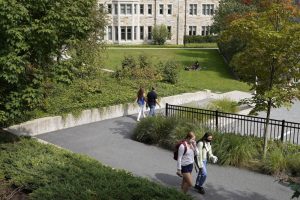
Students walk on the Boston College campus last week in Boston. Because of high infection rates, Boston has decided not to join other cities moving to the next phase of reopening Monday. Steven Senne/Associated Press
The city is on the cusp of reaching an infection rate that the state deems too high for further reopening, Walsh said. As a result, he said, Boston has decided not to join other cities moving to the next phase of reopening Monday.
That means that gyms, museums and libraries will remain limited to 40 percent of capacity and that indoor performance venues will stay closed, among other restrictions.
“We want to make sure that we stop the increase before it comes to a point where we’re having the entire city shut down again,” Walsh said at a news conference.
The city’s latest average infection rate is 3.5 percent, up from a previous average of 2.7 percent, he said. Rates in some neighborhoods have topped 7 percent.
Half the recent cases have been among people under age 29, Walsh said. He cited the city’s large number of universities as a factor but said rates are also rising among those not in college.
An increase in complaints about noisy parties suggests that house parties are to blame for some of the increase, he said.
“To anyone who’s hosting house parties, I’m urging you not to do it,” he said. “On Sunday when the Patriots are playing, we’re asking you not to have house parties; we’re asking you not to gather in large groups.”
Immune system holds clues to people’s diverse reactions to virus
One of COVID-19’s scariest mysteries is why some people are mildly ill or have no symptoms and others rapidly die — and scientists are starting to unravel why.
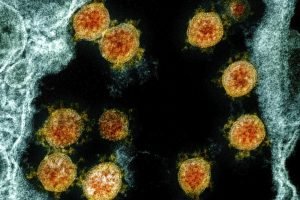
This electron microscope image made available and color-enhanced by the National Institute of Allergy and Infectious Diseases Integrated Research Facility in Fort Detrick, Md., in 2020, shows novel coronavirus SARS-CoV-2 virus particles, orange, isolated from a patient. One of COVID-19’s scariest mysteries is why some people are mildly ill or have no symptoms and others rapidly die – and scientists are starting to unravel why. NIAID/National Institutes of Health via Associated Press
An international team of researchers found that in some people with severe COVID-19, the body goes rogue and attacks one of its own key immune defenses instead of fighting the coronavirus. Most were men, helping to explain why the virus is hitting men harder than women.
And separate research suggests that children fare better than adults thanks to robust “first responder” immune cells that wane with age.
They’re the latest in a list of studies uncovering multiple features of the immune system’s intricate cascade that can tip the scales between a good or bad outcome. Next up: Figuring out if all these new clues might offer much-needed ways to intervene.
“We have the knowledge and capability of really boosting many aspects of the immune system. But we need to not use the sledge hammer,” cautioned Dr. Betsy Herold of New York’s Albert Einstein College of Medicine, who co-authored the child study.
Adding to the complexity, people’s wildly varying reactions also reflect other factors, such as how healthy they were to begin with and how much of the virus — the “dose” — they were exposed to.
“Infection and what happens after infection is a very dynamic thing,” said Alessandro Sette, a researcher at the La Jolla Institute for Immunology in San Diego, who is studying yet another piece of the immune response.
Read the full story about immune defenses here.
Steelers-Titans game postponed to ‘Monday or Tuesday’ after positive tests
NASHVILLE, Tenn. — The Pittsburgh-Tennessee game originally scheduled for Sunday will be played either Monday or Tuesday due to positive coronavirus tests among the Titans, the NFL announced Wednesday.
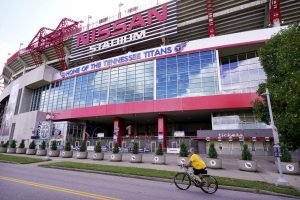
A cyclist passes by Nissan Stadium, home of the Tennessee Titans in Nashville, Tenn. Mark Humphrey/Associated Press
The NFL said a new date and time would be announced as soon as possible and that the postponement would allow additional time for further testing.
On Tuesday, the NFL said three Titans players and five team personnel had tested positive for COVID-19. The Titans have closed their facility at least through Friday and will not be able to practice in any fashion together until Saturday at the earliest.
Titans Coach Mike Vrabel said soon after the announcement Wednesday: “Some of them are indeed experiencing flu-like symptoms, nothing I think out of the ordinary. We anticipate they will feel better shortly. Nothing of overly concern. But my concern is always with the health and safety of our players, our staff and their families.”
As for a potential Saturday return to working out, Vrabel was skeptical.
“I wouldn’t just assume that Saturday,” he said. “We are preparing to play the football game now as early as Monday. Again, I think the focus and the understanding of this football team is now going to be shifted toward playing on Monday. I’m confident the league will allow us time … to get some good practice in, to get on the field and move forward with the game.”
Both the Titans and Steelers are 3-0 and among the NFL’s seven undefeated teams.
Tennessee beat Minnesota 31-30 on Sunday in Minneapolis, and the Vikings’ team facility is closed at least through Wednesday.
“The Steelers-Titans game, originally scheduled for Sunday at 1 p.m., will be rescheduled to allow additional time for further daily COVID-19 testing and to ensure the health and safety of players, coaches and game day personnel,” the NFL said. “Details on the new game date and time on either Monday or Tuesday will be announced as soon as possible.”
Raiders players attended a gala without masks the day before coronavirus outbreak hit NFL
The day before the NFL was faced with its first coronavirus outbreak, Las Vegas Raiders players were seen not wearing masks at a charity event that was in violation of Nevada rules and NFL protocols.
A fundraiser for the charitable foundation of Raiders tight end Darren Waller on Monday night drew Derek Carr, Jason Witten, Nathan Peterman, Foster Moreau, Zay Jones, Hunter Renfrow, Nevin Lawson and Waller along with a crowd of about 100 to an indoor event at the DragonRidge Country Club in Henderson, Nev., a Vegas suburb, according to the Las Vegas Review Journal. Photos and video showed players and guests not wearing masks.
The country club was fined $2,000 by the city of Henderson on Tuesday for four violations of coronavirus directives issued by Nevada Gov. Steve Sisolak, D. Those directives included the wearing of masks and limiting indoor gatherings to no more than 50 people. (The latter order is set to be increased to a limit of 250 on Thursday.)
The league, which unlike the NBA and NHL is not holding its season in a competition bubble that keeps teams at a limited number of sites, set protocols in agreement with the NFL Players Association that limit players’ activities, including barring them from attending any event that “violates local and state restrictions.”
Raiders owner Mark Davis said the team would look into the matter. “We obviously take responsibility for this,” he told the Review Journal. “You don’t like seeing this. I don’t know that it’s actually been built into our memories that you have to wear a mask. Our organization takes it very seriously.”
The NFL had not commented on the matter as of early Wednesday morning.
One person who was at the gala told the Review Journal that Waller wore a mask throughout the event, but video showed Carr and players talking and with attendees without masks.
The NFL was confronted with its first outbreak of the coronavirus Tuesday, when three Titans players and five staff members tested positive for the virus after their game in Minnesota. The Titans shut down their facility and the Vikings suspended in-person team activities, including practices and face-to-face meetings.
Walt Disney Co. is laying off 28,000 U.S. employees
ORLANDO, Fla. — Stricken by the coronavirus pandemic, Walt Disney Co. revealed Tuesday it is laying off 28,000 U.S. employees, including some at Walt Disney World.

One of the normally bustling entrances to the Disneyland resort is vacant due to the coronavirus closure in Anaheim, Calif., in March. The Walt Disney Co. said Tuesday that it planned to lay off 28,000 workers in its parks division in California and Florida. Chris Carlson/Associated Press
Josh D’Amaro, chairman of Disney Parks, Experiences and Products, said the layoffs are happening as the virus has hurt business, and because California has not lifted restrictions that would allow Disneyland to reopen.
“We have made the very difficult decision to begin the process of reducing our workforce at our Parks, Experiences and Products segment at all levels,” D’Amaro said in a news release.
Disney did not provide a breakdown of how many employees are losing their jobs at Disney World and Disneyland. No notice of mass layoffs has been filed with the state of Florida, according to online records.
Of the 28,000 employees, about 67 percent are part-time employees, D’Amaro said, adding the cuts will affect executive, salaried, and hourly jobs.
At one point, the Disney empire of theme parks was closed around the world from the coronavirus pandemic, costing the company $2 billion last financial quarter. But as a company, Disney has generated $50 billion in profit over the past five years.
Disney World reopened in mid-July after a shutdown dating back to mid-March. Last week, D’Amaro held a virtual news conference with the news media to put pressure on the California government to lift the restrictions, saying tens of thousands were dependent on the theme parks for jobs.
In a letter to employees, D’Amaro called the layoffs “the only feasible option.”
“For the last several months, our management team has worked tirelessly to avoid having to separate anyone from the company. We’ve cut expenses, suspended capital projects, furloughed our cast members while still paying benefits, and modified our operations to run as efficiently as possible, however, we simply cannot responsibly stay fully staffed while operating at such limited capacity.
As heartbreaking as it is to take this action, this is the only feasible option we have in light of the prolonged impact of COVID-19 on our business.”
COVID-19 cases rising among U.S. children as schools reopen
After preying heavily on the elderly in the spring, the coronavirus is increasingly infecting American children and teens in a trend authorities say appears driven by school reopenings and the resumption of sports, playdates and other activities.
Children of all ages now make up 10 percent of all U.S cases, up from 2 percent in April, the American Academy of Pediatrics reported Tuesday. And the Centers for Disease Control and Prevention said Monday that the incidence of COVID-19 in school-age children began rising in early September as many youngsters returned to their classrooms.
About two times more teens were infected than younger children, the CDC report said. Most infected children have mild cases; hospitalizations and death rates are much lower than in adults.
Dr. Sally Goza, president of the American Academy of Pediatrics, said the rising numbers are a big concern and underscore the importance of masks, hand-washing, social distancing and other precautions.
“While children generally don’t get as sick with the coronavirus as adults, they are not immune and there is much to learn about how easily they can transmit it to others,’’ she said in a statement.
Read the full story here.
Connecticut to use rapid COVID-19 tests in schools
HARTFORD, Conn. — Gov. Ned Lamont said Tuesday that Connecticut expects to receive about 1 million new rapid tests for the new coronavirus from the federal government and will use them to help make sure schools stay open.
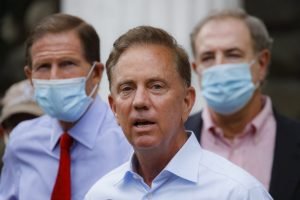
Connecticut Gov. Ned Lamont said Tuesday that Connecticut expects to receive about 1 million new rapid tests for the new coronavirus from the federal government and will use them to help make sure schools stay open. John Minchillo/Associated Press
Lamont said the state is expecting to receive 69,000 of the tests next week. He said they also will be used in settings such as nursing homes, day care centers, prisons, and for the state’s rapid-response team to deal with any virus outbreaks.
“It compliments all the testing we’re doing right now — the PCR testing in nursing homes, vulnerable populations,” Lamont said. “It’s just one more arrow in our quiver.”
The tests will come from a previously announced national supply of 150 million ordered from Abbott Laboratories. The company’s rapid test, the size of a credit card, is the first that does not require specialty computer equipment to process. It delivers results in about 15 minutes.
Lamont said the tests can be given to students and teachers who may have symptoms or may have come in contact with the virus, eliminating the need for them to quarantine or for their schools to close.
Lamont said the tests could also be used by athletic teams to prevent the further cancelation of high school sports seasons.
The governor also announced that Connecticut will be using a new contact tracing telephone app developed by Google and Apple. The program will keep track of who comes in close contact with the phone and notify those people automatically should the user be diagnosed with COVID-19.
Lamont said the companies are taking privacy concerns into consideration and promised the data would be anonymous and not used for any other purpose.
“Anonymity is really important,” Lamont said. “Because it’s not simply a matter of this being available, it is 10 times more effective if 10 times more people feel comfortable having this app on their smart phone.”
NFL’s Titans report 8 positive tests; both Tennessee and Minnesota suspend in-person activities
The NFL says the Tennessee Titans and Minnesota Vikings are suspending in-person activities after the Titans had three players test positive for the coronavirus, along with five other personnel.
The league said Tuesday that both clubs are working closely with the NFL and the players’ union, including their infectious disease experts, on tracing contacts, more testing and monitoring developments.
The Titans (3-0) are scheduled to host the Pittsburgh Steelers (3-0) on Sunday, and the NFL says all decisions will be made with health and safety the primary consideration.
Read the full story here.
NYC elementary schools reopen in big back-to-school test
NEW YORK — Hundreds of thousands of elementary school students are heading back to classrooms Tuesday as New York City enters a high-stakes stage of resuming in-person learning during the coronavirus pandemic, which is keeping students at home in many other big U.S. school systems.
Twice delayed, the elementary school reopening comes over objections from school principals who said the city’s complicated, changing plans put them in a staffing bind.
Meanwhile, officials are worried about recent spurts in virus cases in some city neighborhoods after a summer of success at keeping transmission fairly stable in the city as a whole.
“It’s a big moment for the city,” Mayor Bill de Blasio said on cable news station NY1 Monday night. With in-person learning for middle and high school students scheduled to begin Thursday, he noted, “as many as half a million kids could be in school in the course of this week.”
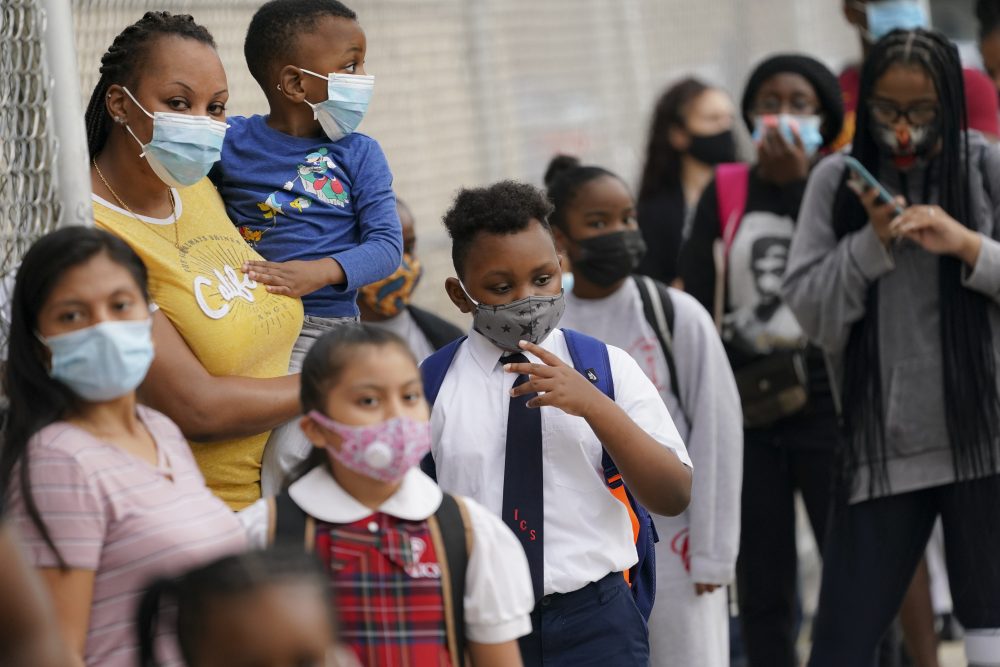
Students wear protective masks due to COVID-19 as they arrive for classes at the Immaculate Conception in The Bronx borough of New York on Sept. 9. After being delayed AP Photo/John Minchillo, File
With over 1 million public school students, New York City initially had a more ambitious timeline than many other big U.S. school systems for bringing children back to schoolhouses this fall. Families have the option of choosing all-remote learning, and a growing number are doing so — 48% as of Friday, up from 30% six weeks earlier, according to city Education Department statistics.
Other students are already back in the city’s virus-altered version of in-person school, learning sometimes in classrooms and sometimes at home.
Pre-kindergarteners and some special education students began showing up Sept. 21 as online instruction began for the rest of the student body.
Students were originally due back Sept. 10. But the start date was pushed back, repeatedly, after the city teachers’ union said it wasn’t safe to open schools because of outdated ventilation systems, an insufficient number of school nurses and other issues. At one point, the United Federation of Teachers threatened to strike.
The union was still pressing for changes as recently as Friday, when the city agreed to let more teachers work from home when instructing students remotely, rather than having to come in to school to conduct online classes.
Read the full story here.
As COVID deaths hit 1 million, scientist says toll may be double
The world officially recorded 1 million deaths from COVID-19 in one of the most sobering milestones of the pandemic, but the real tally might be almost double that.
Actual fatalities from the worst outbreak in a century may be closer to 1.8 million — a toll that could grow to as high as 3 million by the end of the year, according to Alan Lopez, a laureate professor and director of the University of Melbourne’s global burden of disease group. The coronavirus’s rapid spread and ability to transmit in people who show no signs of the disease have enabled it to outrun measures to accurately quantify cases through widespread diagnostic testing.
“One million deaths has meaning by itself, but the question is whether it’s true,” Lopez said in an interview before the tally was reached. “It’s fair to say that the 1 million deaths, as shocking as it sounds, is probably an underestimate — a significant underestimate.”
Even in countries with sophisticated health systems, mortality is difficult to accurately gauge. Tens of thousands of probable COVID-19 deaths in the U.S. weren’t captured by official statistics between March and May, a study in July found, frustrating efforts to track and mitigate the pandemic’s progression.
The dearth of accurate data undermines the ability of governments to implement timely strategies and policies to protect public health and promote economic recovery. If the mortality from COVID-19 reaches 3 million as Lopez predicted, it would rank the disease among the world’s worst killers. An undercount in deaths could also give some people a false sense of security, and may allow governments to downplay the virus and overlook the pandemic’s burden.
India has confirmed more than 6 million COVID-19 cases but accounts for only about 95,000 of the 1 million reported deaths worldwide, according to data collected by Johns Hopkins University. The country, which has the highest number of infections after the U.S., lacks a reliable national vital statistics registration system to track deaths in real time. Meanwhile, in Indiana in the U.S. researchers found that although nursing home residents weren’t routinely tested for the virus, they represented 55% of the state’s COVID-19 deaths.
Read the full story here.
Two missing New Hampshire inmates found, 1 in Maine
